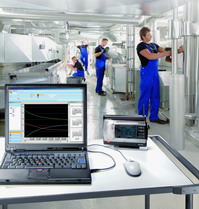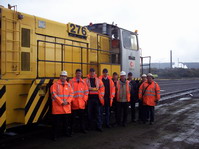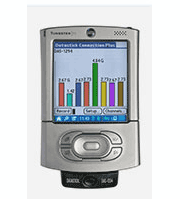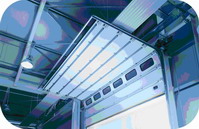In industrial settings, laboratories, and workplaces where hazardous airborne particulates pose a significant threat, the importance of efficient air management cannot be overstated. Aerially transported contaminants, such as dust, fumes, and pollutants, can not only compromise the health and safety of workers but also have adverse effects on the environment. To address these challenges, ducting systems emerge as a critical solution, providing various benefits.
From containing contaminants at their source to facilitating proper ventilation and filtration, these systems are indispensable in safeguarding both workers and the environment. By adhering to industry regulations and promoting worker safety, ducting offers a proactive approach to tackling airborne hazards and fostering a healthier work environment.
What is ducting used for?
Ducting, or ductwork, is used for various purposes across different industries and settings. It is a system of channels or conduits designed to convey air, gases, liquids, or other substances from one location to another. Ducting serves several essential functions, including:
1. HVAC (Heating, ventilation, and air conditioning): Ducting is a fundamental component of HVAC systems. It distributes heated or cooled air throughout buildings and helps maintain a comfortable indoor climate. Air is drawn from rooms, passed through ducts, conditioned (heated or cooled), and delivered back to different areas.
2. Ventilation: Ducting facilitates ventilation in enclosed spaces by extracting stale or polluted air and replacing it with fresh outdoor air. They improve indoor air quality and create a healthier environment for occupants.
3. Exhaust systems: It is used in exhaust systems that remove unwanted air, fumes, or pollutants from industrial processes, laboratories, kitchens, and other areas where airborne contaminants are produced.
4. Dust and particle collection: In industrial settings, ducting is utilised to collect and transport dust, particles, and debris away from workspaces. This helps maintain a cleaner and safer environment for workers and machinery.
5. Filtration: These systems often incorporate filters to trap and remove particulates, allergens, and pollutants from the air.
6. Process piping: In some applications, ducting functions as a tube for transporting gases or liquids during industrial processes.
7. Environmental control: Ducting helps regulate humidity levels in indoor spaces, which is particularly important for environments like data centres and certain manufacturing facilities.
8. Smoke extraction: In the event of fires, ducting can extract smoke and direct it outside, helping occupants evacuate safely and assisting firefighters in managing the situation.
9. Cleanrooms: Ducting is employed in cleanroom environments to maintain controlled and filtered air, ensuring minimal contamination during manufacturing processes or scientific research.
10. Air distribution: It distributes air evenly in large commercial or industrial buildings, ensuring consistent airflow and temperature throughout the space.
Ducting comes in various shapes, sizes, and materials, depending on the specific application and the substance being conveyed.
Examples of hazardous airborne particulates
Hazardous airborne particulates are tiny solid or liquid particles suspended in the air that can pose risks to our health and the environment. These particles can be produced naturally or by various human activities. Some examples include dust, mould, asbestos, lead particles, pollen grains, silica, diesel emissions and smoke particles.
Fine dust consists of tiny particles with a diameter of 2.5 micrometres or smaller. These particles can originate from various sources, such as vehicle emissions, industrial processes, and wildfires.
Mould spores can be found in various indoor environments. Inhaling them can lead to respiratory issues, particularly for individuals with allergies or asthma.
Asbestos is a mineral that was widely used in building materials. Disturbance of asbestos can release microscopic fibres that, when breathed in, can cause severe lung diseases.
Lead particles are present in the air around industrial sites or from deteriorating lead-based paint in older buildings. Inhalation of lead particles can aggravate and contribute to neurological and developmental problems.
Pollen grains are released by various plants. They can become airborne and trigger allergic reactions in susceptible individuals.
Silica is a naturally occurring mineral found in sand, rocks, and soil. Activities such as construction or mining can disturb silica, generating fine dust that can cause respiratory issues if inhaled.
Diesel exhaust particles are emitted by vehicle engines. They contribute to air pollution and potential respiratory problems.
Finally, smoke generated by wildfires or burning materials (including cigarettes) can release fine particulates that pose health risks when taken in.
Factors that may affect the ducting system's performance
iDuct, a provider of ducting solutions with over 40 years of experience, alerts that several key factors come into play when evaluating a ducting system's capabilities.
One crucial aspect is the choice of material, which should be carefully selected to withstand the corrosive or abrasive nature of different dangerous particulates.
The size and design of the ducts, along with the placement and design of extraction hoods, also play vital roles in ensuring efficient containment and extraction.
Proper sealing of duct joints and connections is essential to prevent leaks and maintain system efficiency. Additionally, airflow velocity, filtration system effectiveness, and precautions against static electricity hazards are critical considerations. Regular cleaning and maintenance, along with monitoring mechanisms, further enhance the system's performance. Understanding and accounting for environmental factors are also necessary for optimal effectiveness.
Addressing these elements creates a safer working environment and mitigates potential risks associated with hazardous particulates.
 Holroyd Instruments Ltd draw upon AE experience stretching all the way back to 1974 when Trevor Holroyd (the founder of the company) started his research in this field in the prestigious Advanced Research Labs of Rolls Royce. Both fundamental research and development of Airline and Shop-Floor applications continued until in 1991 he left Rolls-Royce and set up Holroyd Instruments.
Holroyd Instruments Ltd draw upon AE experience stretching all the way back to 1974 when Trevor Holroyd (the founder of the company) started his research in this field in the prestigious Advanced Research Labs of Rolls Royce. Both fundamental research and development of Airline and Shop-Floor applications continued until in 1991 he left Rolls-Royce and set up Holroyd Instruments.
 Thermal imaging has evolved into one of the most valuable diagnostic tools for Predictive Maintenance. By detecting anomalies often invisible to the naked eye, thermography allows corrective action to be taken before costly system failures occur.
Thermal imaging has evolved into one of the most valuable diagnostic tools for Predictive Maintenance. By detecting anomalies often invisible to the naked eye, thermography allows corrective action to be taken before costly system failures occur. .jpg) The February 2010 edition of Engineering Maintenance Solutions magazine is now available to read online. This edition contains articles on achieving best practice in condition monitoring and plant maintenance. As well as special focuses on value driven maintenance, ATEX Equipment and more as well as the latest industry news and products.
The February 2010 edition of Engineering Maintenance Solutions magazine is now available to read online. This edition contains articles on achieving best practice in condition monitoring and plant maintenance. As well as special focuses on value driven maintenance, ATEX Equipment and more as well as the latest industry news and products.
 VIBCODE
VIBCODE Testo Ltd is pleased to announce the launch of the Saveris data monitoring system. The Testo Saveris data logging system continuously monitors temperature and humidity accurately and reliably. The easy-to-use system automatically measures, documents and issues alarms whenever limit values are exceeded.
Testo Ltd is pleased to announce the launch of the Saveris data monitoring system. The Testo Saveris data logging system continuously monitors temperature and humidity accurately and reliably. The easy-to-use system automatically measures, documents and issues alarms whenever limit values are exceeded. A fleet of diesel locomotives at Corus Group
A fleet of diesel locomotives at Corus Group Datastick DAS-1254 and DAS-1294 data acquisition modules for Palm Tungsten series handhelds and m500-series handhelds provide four (DAS-1254) or eight (DAS-1294) analog input channels, one digital counter, one digital input line, and two digital output lines. When used with Datastick Connection, Datastick Connection Lite, or Datastick Connection Plus software, these devices provide a complete, real-time data acquisition system
Datastick DAS-1254 and DAS-1294 data acquisition modules for Palm Tungsten series handhelds and m500-series handhelds provide four (DAS-1254) or eight (DAS-1294) analog input channels, one digital counter, one digital input line, and two digital output lines. When used with Datastick Connection, Datastick Connection Lite, or Datastick Connection Plus software, these devices provide a complete, real-time data acquisition system UK businesses that fail to maintain their industrial doors, could not only be breaking the law but could also be at risk of lost production time, expensive breakdown costs, potentially serious accidents and even invalidating their insurance cover.
UK businesses that fail to maintain their industrial doors, could not only be breaking the law but could also be at risk of lost production time, expensive breakdown costs, potentially serious accidents and even invalidating their insurance cover. 
